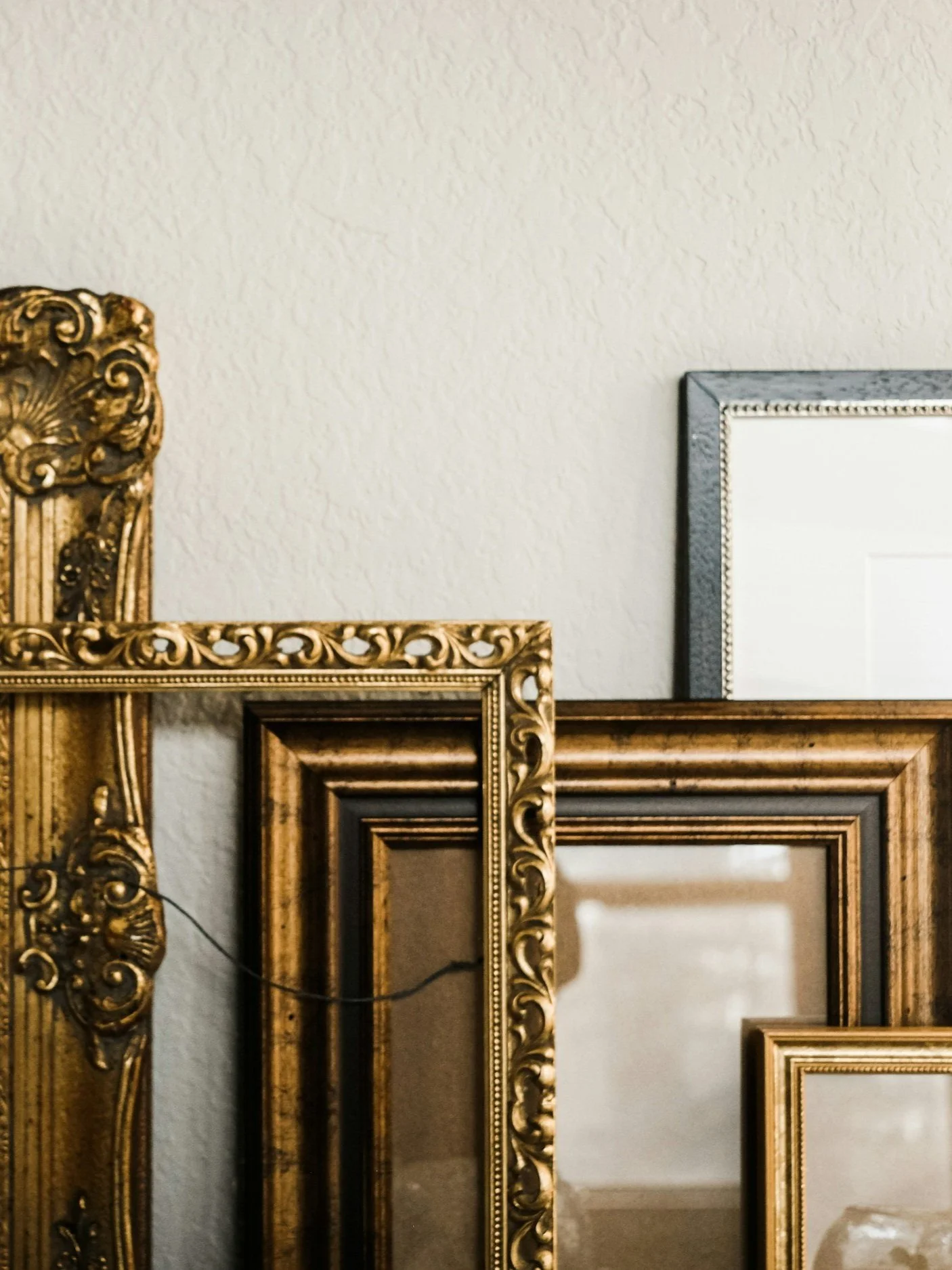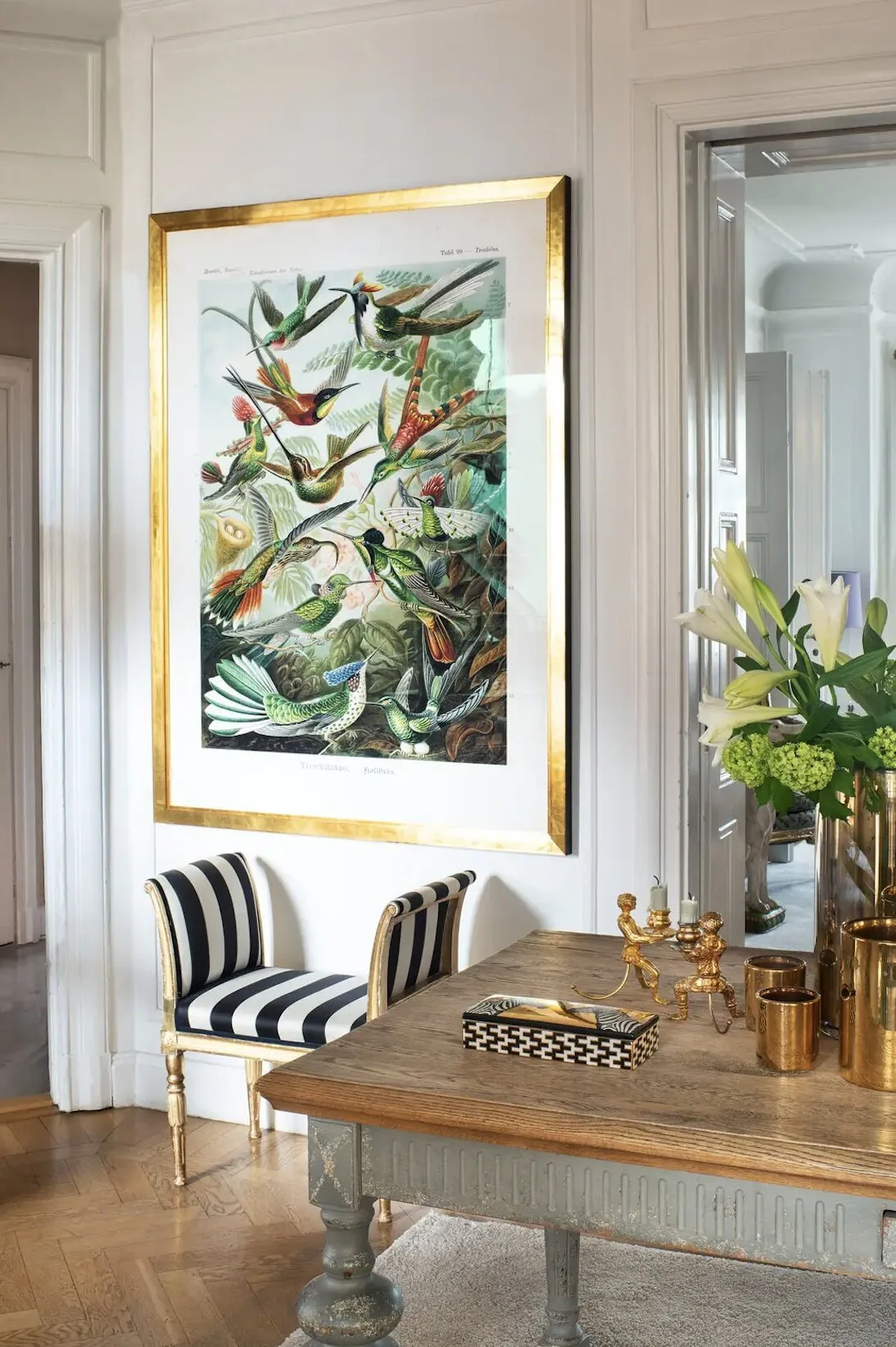Choosing The Right Frame For Your Art Prints
Art has no boundaries, when it comes to decorating your home, few things are as personal or as powerful as art. Whether it’s a striking photograph, an abstract painting, or a vintage print, art can help you set the mood of your interior. Your chosen art together with the rest of your interiors will tell a story of who occupy the space.
Choosing the right frame for your art print is important for both preserving the artwork and complementing your interior space. A well-chosen frame not only protects the print but can enhance its visual impact and integrate seamlessly with your interior style, or can even transform the entire feel of your space.
Continue reading to find out what to consider when selecting a frame:
The Artwork Itself
Before you even think about the style of the frame, take a good look at the artwork. The frame should support and enhance the piece, not overshadow it. Ask yourself these questions:
What is the style of the artwork? Is it modern, traditional, minimalist, or vibrant? The frame should align with the artistic style. For instance, modern art looks great in sleek, minimalist frames, while classic paintings often work better with ornate, traditional frames.
What colours dominate the piece? A frame can either contrast or complement the colours in the art. Neutral-coloured prints often work well with bold or dark frames, while colourful prints may benefit from a more subtle, neutral frame to let the art shine.
Is there a border or a mat? If the artwork has a white or coloured border, you’ll want to choose a frame that accommodates it. In some cases, a mat can be used to create space between the artwork and the frame, giving the piece room to breathe.
The Room’s Interior Style
The frame you choose should complement the overall look of the room where the artwork will be displayed.
Furniture Style: Is your room more modern or traditional? For a contemporary room, a sleek metal or simple black frame might be ideal, while a vintage or rustic space might call for a wooden frame with a bit more character.
Colour Palette: The frame should either match or contrast with the room’s dominant colours. For a neutral room, a pop of colour or a bold metal frame can stand out. For more colourful spaces, a neutral frame (like wood or black) can ground the art without competing with other elements.
Mood or Vibe: What atmosphere are you trying to create? A luxurious gold frame can add sophistication to a room, while a minimalist black or white frame will keep things clean and understated.
Frame Material
The material of the frame will affect both the look and the durability of the piece. Some materials have a more visual impact than others:
Wooden Frames: These are versatile and can come in a range of finishes, from light oak and pine to dark mahogany and walnut. Wood offers warmth and texture, making it suitable for a variety of styles—rustic, vintage, Scandinavian, or even modern (depending on the finish).
Metal Frames: Metal frames, such as those in silver, black, or gold, offer a sleek and contemporary look. Matte or brushed finishes can be subtle, while polished finishes add a touch of luxury. Metal frames are often slimmer than wooden ones, so they can work well for modern and minimalist art.
Acrylic/Plastic Frames: These are often more affordable and lightweight, and they can offer a contemporary look in bright or transparent finishes. They work well for casual spaces or for artwork that you want to frame on a budget.
Size and Proportions
The size of both the artwork and the frame is crucial. An ill-fitting frame can diminish the artwork's impact, while the right size will showcase the art to its best advantage:
Match the Scale: For larger art pieces, you’ll need a more substantial frame that can support the weight and scale of the print. A thin, delicate frame might get lost on a big canvas, while a heavy frame might overwhelm a small piece.
Proportions of the Frame: A frame should be proportional to the artwork. A very thin frame can be fine for small prints, but larger pieces typically look better in frames that have a bit more substance. Conversely, an oversized frame on a small piece can make the artwork look lost or out of place.
Matting: To Mat or Not to Mat?
Matting is the border around your artwork, usually made from paper or cardboard, that creates space between the print and the frame. Whether or not to mat your art depends on the look you’re going for and the type of artwork.
Advantages of Matting:
It adds a sense of formality and professionalism, especially for fine art prints or photography.
It prevents the print from touching the glass, which can help preserve the artwork in the long term.
It can highlight the artwork and make the piece appear larger or more impactful.
When to Skip the Mat: If the artwork fills the frame completely or if the art is bold and graphic (like some abstract or modern prints), you may want to forgo a mat. A frame without matting can give a clean, streamlined look.
Frame Finish
The finish of the frame can have a subtle yet significant impact on how the artwork is perceived:
Glossy or Matte: Glossy frames reflect light and can add a bit of glamour to the art, but they may also cause glare. Matte finishes absorb light, giving a more understated, muted appearance. For art prints that are meant to be calming or subtle, matte frames are often preferred.
Textured vs. Smooth: Frames with texture (like distressed wood or hammered metal) add visual interest and may work well for rustic or eclectic interiors. Smooth frames, on the other hand, are more minimalist and modern, offering a clean, sleek look.
Create a Gallery Wall
If you’re unsure which frames to choose, consider a gallery wall. Mixing and matching frames can create visual interest and reflect different aspects of your personal style. While it’s fun to play with different frame materials, colours, and sizes, be sure to maintain some consistency—such as using the same type of matting or aligning frames in a cohesive way.
Protecting Your Art
While the aesthetics of the frame are important, it’s also vital to protect the art print from damage over time. When selecting a frame, consider the following protective features:
UV-Protective Glass: UV glass helps to protect the artwork from the harmful effects of sunlight, which can cause fading or discolouration. If your artwork will be exposed to natural light, this is a smart investment.
Non-Acidic Matting: Acid-free or archival-quality mats help to preserve the integrity of the print and prevent yellowing or deterioration over time.
Backing Board: Ensure that the frame has a sturdy backing board that keeps the artwork in place and prevents bending or warping.
Budget
Frames come in a wide range of price points. Custom framing can be expensive, but it’s often worth the investment for high-quality prints or artwork that you want to preserve. Ready-made frames, available in a variety of standard sizes, are a more budget-friendly option, but they may not offer the same quality or customization.
Photo: House & Garden
Personal Preference
At the end of the day, choosing a frame is also about personal taste. It’s important to go with something that resonates with your aesthetic preferences, as well as with the overall vibe of the room. Don’t be afraid to experiment with different styles, materials, and colours to find what best fits your unique vision for the space.
Conclusion
The right frame can completely transform the way a piece of art interacts with your interior space. Choosing the right frame for your art print involves balancing aesthetics with functionality. The frame should enhance the artwork and integrate smoothly with the overall design of your room. By considering the material, style, size, finish, and protective features, you’ll be able to select a frame that not only looks great but helps to preserve and showcase your art for years to come.



